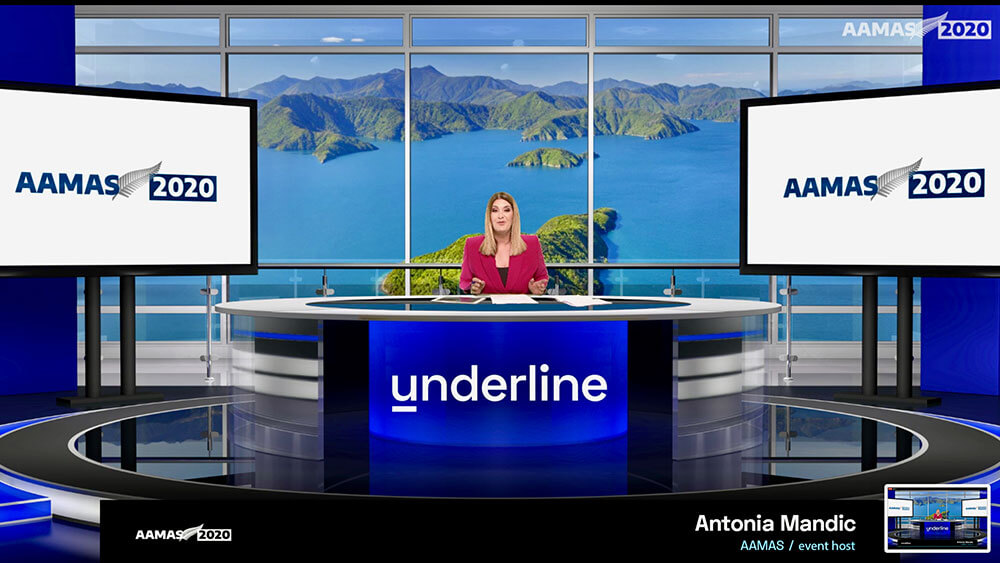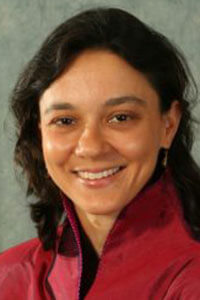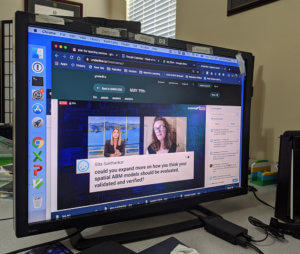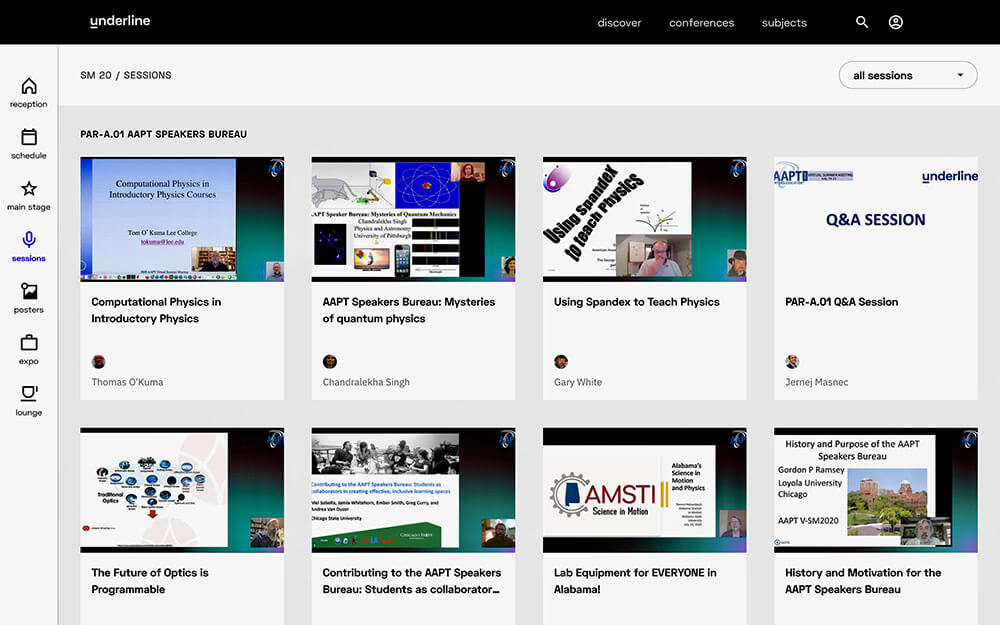
Antonia Mandic hosts the online International Conference on Autonomous Agents and Multi-Agent Systems from a virtual desk in front of an image of New Zealand, where the live conference was to have taken place.
In March, it became obvious to Gita Sukthankar, Ph.D., that her conference was not going to happen as planned. It was a letdown for the associate professor in the computer science department at the University of Central Florida, who, as general chair of the International Conference on Autonomous Agents and Multi-Agent Systems (AAMAS), was particularly excited about heading to Auckland, New Zealand for the 19th edition of the event, due to kick off on May 9, 2020.

Gita Sukthankar
For AAMAS — whose subject matter falls under a subfield of computer science and touches everything from artificial intelligence to machine learning to game theory — the annual conference holds special importance for its members, mostly academics and researchers. Every summer, anywhere from several hundred to nearly 1,000 attendees travel from all over the world to share their latest advancements and research — a mid-size conference for their field, according to Sukthankar.
Nixing their original plan, Sukthankar and her team revamped the format into a fully virtual experience in just seven weeks, halving the registration fee for authors and making the conference free for participants. Earlier in the year, her team had begun working with Underline, a two-year-old event platform tailored specifically to the needs of scientific conferences. The original plan called for the Underline team to travel to the conference and record all of the live presentations for on-demand consumption through Underline’s online platform. But when AAMAS decided to go completely virtual, Underline was able to jump into the deep end with them. “Many of the conferences [in our field] have been trying to move in the direction of getting more of their talks and videos online [anyway],” Sukthankar said. “With COVID, it became obvious that we need to do more of it.”
A Redesign with Underline
Instead of five days in Auckland, the AAMAS annual conference ran entirely online from May 9-13. The Underline platform accommodated the bulk of the content — pre-recorded presentations sent in from paper authors, and keynotes live-steamed from thought leaders from U.K.-based AI company and research laboratory DeepMind and multiple universities around the world. When all was said and done, the conference library offered 478 total presentations, lectures, and videos, all of which are accessible — along with slides, demos, abstracts, and tutorials — to AAMAS members for free and to others on Underline.io going forward.

Gita Sukthankar, organizer of the AAMAS conference, asks a speaker a question during the event via Underline’s platform.
Underline’s senior vice president of strategic partnerships, Darrell Gunter, said that the company “sweats all of the details” for scientific conferences like AAMAS. Besides recording and storing the presentations and other kinds of content, the Underline team handles behind-the-scenes work like prepping speakers and moderators in a virtual green room, and also helps organizations find ways to drive revenue.
“In the digital world, you have a whole new digital landscape for opportunities,” Gunter said. Through the Underline platform, organizers can offer its virtual event spaces up for sponsorship, ads, and commercials. For scientific conferences with trade-show components, attendees can meet with exhibitors in one-on-one virtual appointments. “The only thing you can’t do is shake their physical hand,” he said.
Underline’s repository is essentially a virtual storage unit for content that organizers can put behind a paywall. The content can live there for as long as organizers want, and if they choose, bring in revenues from viewers who continue to access it.
Besides gaining access to new data insights, Sukthankar was pleased about seeing a significant bump in attendance. “We would have had 400 people” at the in-person meeting planned for Auckland, she said, “and we had more than 1,300 people watching on day one.” In total, 3,726 individual users accessed their conference, which Sukthankar partly attributed to the fact that the virtual event took visa restrictions out of the equation. And Underline’s platform is accessible to participants in countries that block websites like Facebook, Google Hangouts, and Vimeo, often used by their presenters/authors who prefer to DIY their virtual presentations.

Underline helped the AAMAS pivot their live annual conference to digital. The service hosted a conference library with 478 total presentations, lectures, and videos featuring its speakers.
Growing Pains
Some challenges the organizers addressed included choosing times that worked for audiences tuning in from North Carolina, New Zealand, and everywhere in between for live-streamed keynotes being broadcasted mostly from the U.S. and the U.K. Not surprisingly, the times were not universally popular. “We did get some disappointed attendees,” Sukthankar admitted.
In addition, some authors and presenters felt slighted because there wasn’t an opportunity for them to directly converse with attendees during their paper presentations — typically done during in-person poster sessions and panels. And Onlinetown, a video-chat tool organizers used for networking, didn’t engage attendees quite like they thought it would. This SimCity-like virtual environment allows attendees to walk around and socialize with other attendees using an avatar. When the avatars get close enough, a video chat automatically opens for the parties to converse live. Sukthankar’s team set up virtual spaces representing research topics, “but a lot of people were just confused on how to interact,” she said. Next time, they plan to designate specific break times to nudge attendees into socializing more.
Overall, attendees reported feeling positively about the event — “but one or two said, ‘Please don’t ever do this again,’” Sukthankar said. Those members who were looking forward to meeting face-to-face in Auckland need to sit tight for just two more years: The 21st edition of the international AAMAS conference will take place there in 2022.
